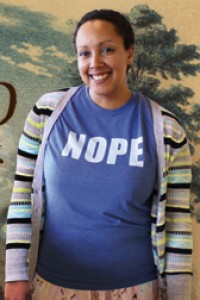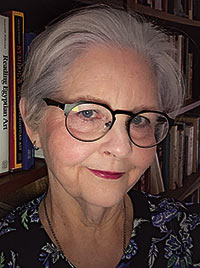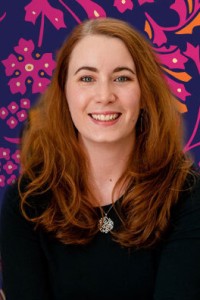Ellen Datlow & Terri Windling: Depth and Heart (part 2)

[ Part 1 ]
Terri Windling was born December 3, 1958 in New Jersey, and grew up there and in Pennsylvania. She studied literature and mythology in the US, England, and Ireland, and in 1979 moved to New York, where she began working in publishing as an editor (and occasionally as an artist). She was Jim Baen’s editorial assistant at Ace, soon became associate editor, and was then named fantasy editor to help found the Ace Fantasy imprint; in 1984 she was promoted to executive editor. After Ace was sold to the Putmans Publishing Group, she worked as a consulting editor for Ace in 1985 and 1986, while also creating the Fairy Tales series of novels (Ace), the Borderland shared-world series (NAL), and establishing the MagicQuest YA fantasy line at Ace/Tempo. In 1987 she moved from Ace to Tor, where she then worked as a consulting fantasy editor for over 20 years. She co-edited The Journal of Mythic Arts (1987-2008), edited or co-edited half a dozen anthologies in addition to those with Datlow, and also produced her own fiction, notably debut novel The Wood Wife (1996, winner of the Mythopoeic Award), children’s books, and middle-grade fantasies. She has also written text for art books (including by Brian Froud), numerous essays, and has contributed to scholarly works in the folklore field, including The Oxford Companion to Fairy Tales. She founded the Endicott Studio organization, is on the board of The Sussex Centre for Folklore, Fairy Tales and Fantasy (University of Chichester, UK), and her own ‘‘folkloric’’ artwork regularly appears in galleries and museums. Windling has been nominated for 31 World Fantasy Awards and won nine, putting her just after Datlow for the most nominations and wins for that award, and received the SFWA Solstice Award in 2010 for ‘‘outstanding contributions to the speculative fiction field as a writer, editor, artist, educator, and mentor.’’ She married British dramatist Howard Gayton in 2008; they live in Devon England.
Excerpts from the interview:
Ellen Datlow: ‘‘Do you remember how we met? Because I don’t remember that at all.’’
Terri Windling: ‘‘We met at conventions, but we knew each other only socially until we began working on the Year’s Best anthologies. You were at Omni then.’’
ED: ‘‘Omni was my first genre job, so yeah. I started there around 1979. I was associate fiction editor, and by 1981 I was fiction editor. Our first year’s best anthology was in 1987.’’
TW: ‘‘You were at Omni, and I was at Ace, then at Berkley/Ace, and then at Tor. I was at Tor at the point when you and I started doing the Year’s Best Fantasy and Horror.”
TW: ‘‘I had done three Elsewhere anthologies by that point. My first one had won the World Fantasy Award. That was in the early ’80s. I’d also edited an anthology of faery stories, and was building up the fantasy line at Ace. It was Jim Frenkel’s idea to do The Year’s Best Fantasy and Horror. At that point Ellen was making a name for herself with horror anthologies, and I was known as someone who came into the field specifically interested in fantasy. At the time most fantasy was being published by SF editors, some of whom didn’t even like fantasy, whereas I was specifically focused on fantasy. I consider it a separate genre. SF and fantasy are parallel genres, and they overlap, but they are not the same genre. They have different literary histories, and different (if overlapping) readerships. I think that’s why Jim thought of me to do the fantasy side of Year’s Best, because I was very passionate about the fantasy field, and Ellen had become very passionate about horror. We knew each other to say hello to back then, but we didn’t know each other well. And yet, when we started working together, it was so lovely.’’
…
ED: ‘‘Didn’t Tom Canty suggest the fairytale anthologies? Staring with Snow White, Blood Red?’’
TW: ‘‘The two of us did. Tom Canty is a good friend of mine and we were both really interested in retold fairy tales, which were not a big thing at the time. We were obsessed with Angela Carter’s adult fairy tale collection, The Bloody Chamber, Anne Sexton’s Transformations…’’
ED: ‘‘Tanith Lee.’’
TW: ‘‘….and yes, Tanith Lee’s Red as Blood. At that point, there weren’t many other ‘adult fairy tales’ out there. I had specialized in the history of fairy tales in university. It’s been a passion of mine since I was a little girl, really. Tom Canty shared that passion. We were talking over lunch one day about how great it would be to do an anthology of retold fairy tales in the fantasy field, using Angela Carter as a model, and Tanith Lee as a model. Ellen and I had been working together on Year’s Best for a few years at that point and I immediately said, ‘Let’s get Ellen involved, because the range of stories will be so much better.’ I’m not so good on the horror/dark fantasy end of things, so I asked Ellen if she would edit the books with me, with Tom as our first choice for cover artist.’’
ED: ‘‘I had grown up with fairy tales. I adored fairy tales. My mom read them to me when I was a kid. So I said, ‘‘Yeah.’’ I loved Angela Carter. I was not as familiar with Tanith, but Angela Carter I adored. The intention of doing the retellings was to go back to the roots.’’
TW: ‘‘We started planning the project when I was living in Boston at the very end of the ’80s. It took us a while to get a publisher interested. Back then, people still thought of fairy tales as Disney movies and as stories for very tiny children. The darker, adult roots of the stories were known primarily only to fairy tale scholars. That was something we really wanted to correct. It’s changed so much since then, there’s a much wider understanding of the complex history of the tales.’’
…
ED: ‘‘Let’s talk about what anthology editors do, and how we work as an editing team.’’
TW: ‘‘Well, with the original anthologies, we work more collaboratively than we did on the Year’s Best Fantasy and Horror series. For Year’s Best, we chose our stories separately and didn’t weigh in on each other’s choices, but for the originals, writers submitted their work to us both, and we had to agree before we accepted a story. In the rare instances where we disagreed, the rule of thumb was that if one of us really loved a story and the other didn’t hate it, we would generally buy it. But there were occasions where one person really disliked something the other person liked, and then we didn’t take the story. That didn’t happen very often. There might be one or two stories in each anthology that one or the other of us was lukewarm about, but none that either of us actively disliked.’’
ED: ‘‘Right – and it didn’t dilute the anthology because one of us loved it.’’
TW: ‘‘I think that was a good system, because it gave a wide range to our selections. It wasn’t just my taste, and it wasn’t just your taste, and it wasn’t just our combined taste. We covered a lot of different bases. I think that’s what makes our partnership work.’’
ED: ‘‘There are plenty of writers who write stories where I can objectively see how people would like them, and there’s nothing wrong with them, but they don’t speak to me. There are certain kinds of stories I realize I’m totally cold to, that you love. You’re much more into folktales than I am – not fairy tales, folktales. I have a blind spot with most folktales. I have no idea why. I haven’t thought about it enough to know why they don’t work for me. It’s a very general thing. There are some writers whose stories don’t work for me. The writing just doesn’t work, and I assume that’s true for you too.’’
TW: ‘‘I don’t think either of us has a rigid list, though. It’s not, ‘You have to hit this, this, this, and this for us to like the story.’ Each writer has different strengths.’’
ED: ‘‘Each story is different. There are different things about stories that attract you, also. Sometimes, for me, it’s the setting. The rest is good, but it’s the setting that gets me. Or the tone, or the voice.’’
TW: ‘‘Yeah, the voice and the language. Sometimes, frankly, the language is not that strong, but the storytelling is strong, and the actual heart of the story is there. Gordon Van Gelder said something to me once that has stuck in my mind. He was trying to figure out, with the Year’s Best in particular, what it was that linked my choices. He didn’t always agree with my choices; he would’ve chosen different stories, but he could see there was something them – it always made sense to him on a visceral level why I had chosen them. Not just personal taste, but why I would consider them to be among the best of the year. What he finally decided was (and Gordon, forgive me if I’m not saying this quite right): each piece was a story that the writer really had to write. I love that, because it rings very true for me. I like stories where you can tell the writer is really invested in it. It’s not just a clever idea they are toying with or think will sell; it’s a story they need to tell. I really like stories that have depth and heart to them. Not necessarily positive stories; they can be very dark, but always multi-layered, with something going on beyond surface cleverness.’’
…
TW: ‘‘For the Year’s Best Fantasy and Horror series, however, we never did the story ordering. Jim Frenkel did it, and he did a wonderful job.’’
ED: ‘‘We never read each other’s stories, usually.’’
TW: ‘‘He loved doing the ordering. Jim isn’t the golden-haired boy of the field at the moment, but there were things he did that were brilliant, and in talking about Year’s Best that should be acknowledged.’’
ED: ‘‘And things that were important to the field. Like getting us together.’’
TW: ‘‘I don’t know if you know how Jim got me involved. I was out in Minneapolis, visiting Emma Bull and Will Shetterly and the other writers of the ‘Scribblies’ group, and I was staying at Emma and Will’s house. I got this call from Jim late at night saying, ‘Would you edit this book?’ I don’t know how he tracked me down out there, and he didn’t have a publisher lined up or anything – it was so speculative, and he was just rattling on, and it was late, and I was tired. I think I may have said ‘Yes’ just to get off the phone!! I’m not sure I believed it was really going to happen. I’m glad, of course, that it did. Year’s Bests do shape the field. Plus I got to work with you for the first time, which I discovered I loved. We work so well together.’’
ED: ‘‘It’s fun.’’
TW: ‘‘When you find a good partner, they’re worth their weight in gold. I have no desire to go back to solo editing. My best work has been with you, through the synergy that comes from a long partnership, and an equally long friendship.’’
Read the complete interview in the June 2016 issue of Locus Magazine. Interview design by Francesca Myman.





